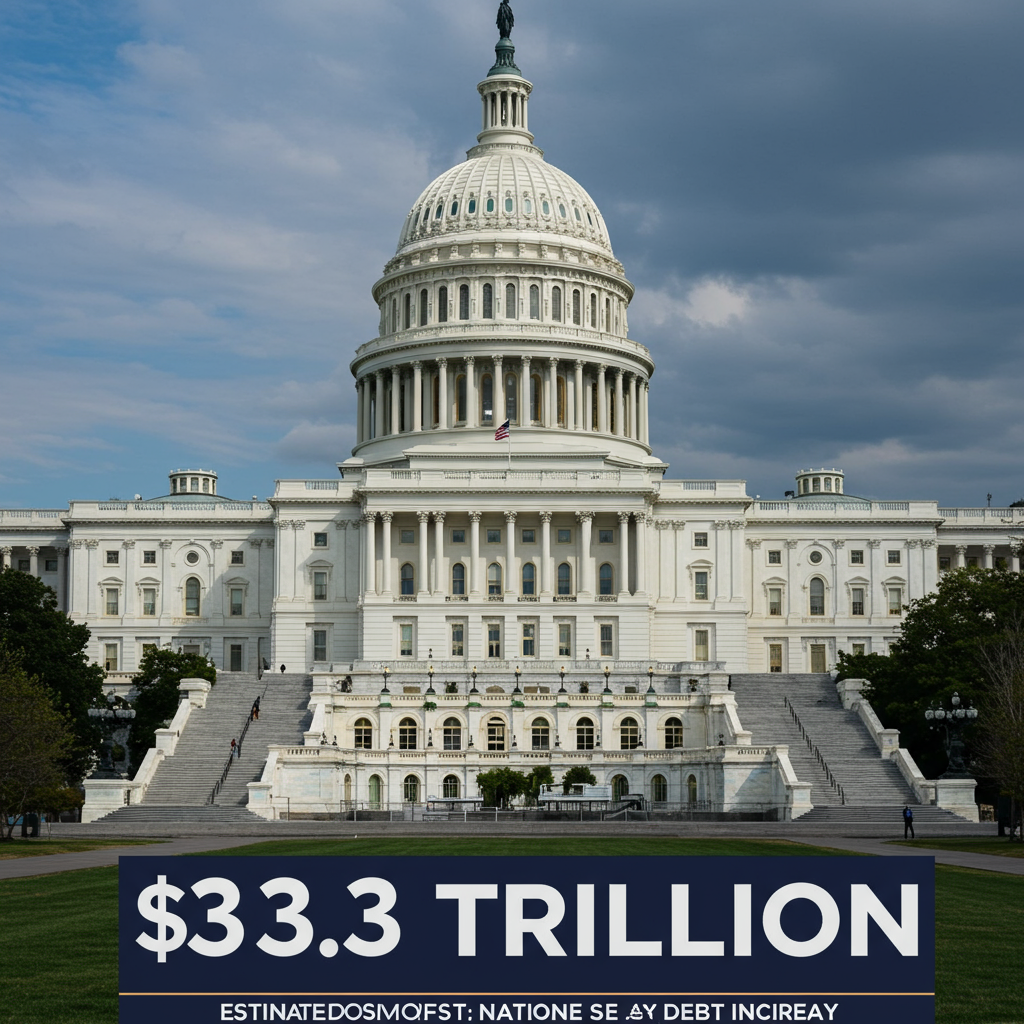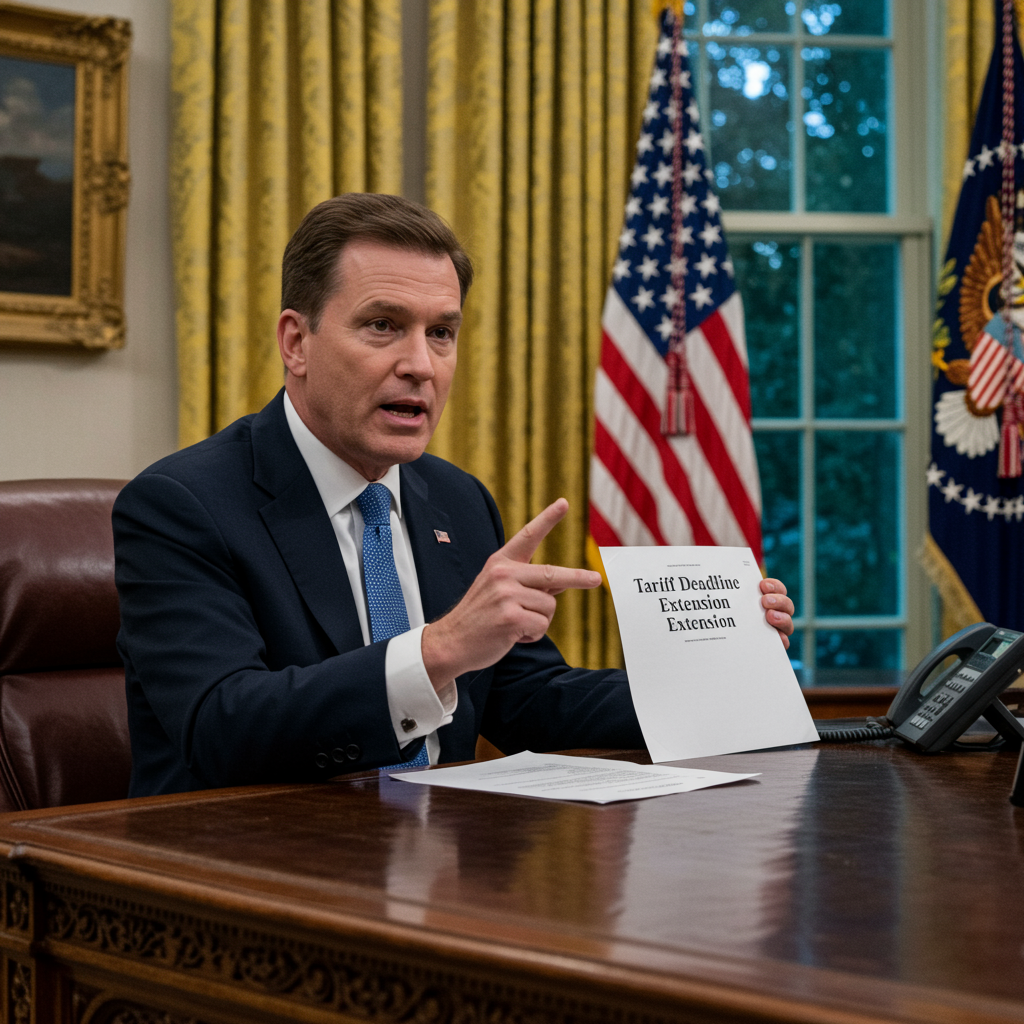A proposed legislative package advancing through the U.S. Senate, dubbed the “One Big Beautiful Bill Act,” is projected to significantly increase the national debt and potentially reduce health insurance coverage for millions of Americans. A new analysis from the nonpartisan Congressional budget Office (CBO) estimates this Senate version of the bill would add a staggering $3.3 trillion to the budget deficits over the next decade. This projection highlights deep fiscal and social implications, fueling intense debate in Washington.
The CBO score lands as the bill is being considered under the Senate’s reconciliation process. This procedural tool allows certain legislation related to the budget to pass with a simple majority, bypassing the usual 60-vote threshold needed to overcome a filibuster. While the House previously passed its own version, scoring at an estimated $2.4 trillion debt increase, the Senate’s proposal carries a substantially larger fiscal impact, according to the CBO. The analysis covers the period through fiscal year 2034.
Bill Projected to Skyrocket National Debt
The core of the CBO’s alarming $3.3 trillion estimate lies in the balance between projected revenue changes and spending adjustments within the bill. According to the CBO, the legislation is expected to result in a massive $4.5 trillion decrease in tax revenues over the next decade. This significant reduction is only partially offset by an estimated $1.2 trillion in spending cuts proposed by the bill. The cumulative effect is the projected $3.3 trillion addition to the national debt.
The legislation proposes expanding and making permanent tax provisions originally enacted in the 2017 Tax Cuts and Jobs Act. These tax changes are a central component of the bill and a key priority for former President Donald Trump’s agenda, intended to be funded through various spending reductions. The bill also includes other elements championed by the former administration, such as increased funding for border security.
Disputed Figures and economic Growth Forecasts
Not everyone agrees with the CBO’s projections. Many Republican lawmakers and analysts dispute the CBO’s methodology, arguing that the agency’s models don’t fully account for the positive economic effects of tax cuts and deregulation. An alternative analysis from the Council of Economic Advisers (CEA) presents a starkly different picture.
The CEA’s report suggests that the economic growth spurred by the tax provisions alone could lead to a deficit reduction of $2.1 trillion to $2.3 trillion over the decade. Furthermore, the CEA claims that deregulation and enhanced energy policies within the bill could contribute an additional $1.3 trillion to $3.7 trillion in offsetting deficit reduction. When combined with discretionary spending cuts and tariff revenues, the CEA’s analysis concludes that the “Trump economic policies anchored by the OBBB” could result in a total offsetting deficit reduction ranging from $8.5 trillion to $11.1 trillion over the decade. These optimistic forecasts contrast sharply with most other budget analyst projections, which anticipate increased deficits.
Millions Could Lose Health Coverage
Beyond the fiscal impact, the CBO’s analysis also forecasts a significant rise in the number of uninsured Americans under the Senate bill. The agency estimates that nearly 12 million more people could lose their health insurance coverage by 2034. This is roughly 1 million more than the CBO estimated for the House version of the bill, which projected 10.9 million additional uninsured.
The increase in projected uninsured individuals is attributed to several changes within the Senate bill. These include deeper cuts to the Medicaid program, the essential safety net for millions of low-income, elderly, and disabled Americans. The bill proposes measures like new work requirements for many adults to qualify for benefits. It also involves steeper taxes on healthcare providers and hospitals – known as “provider taxes” – which states currently use to help fund their Medicaid programs. Cuts to provisions within the Affordable Care Act (ACA) also contribute to the expected rise in the uninsured population.
Impact on Vulnerable Populations and Social Programs
Critics argue that the proposed cuts would disproportionately harm the poor and vulnerable. Organizations like Catholic Charities USA have expressed deep concern, emphasizing that balancing the budget should not come at the expense of crucial programs supporting the working poor and those in need. The U.S. Conference of Catholic Bishops (USCCB) specifically opposed cuts to Medicaid and the Supplemental Nutrition Assistance Program (SNAP), labeling these provisions as “unconscionable and unacceptable” based on Catholic social teaching that prioritizes the well-being of the poor.
The bill includes restrictions on the food stamps program, potentially requiring adults with children aged 14 or older to show proof of work. While proponents argue these measures combat fraud and encourage self-sufficiency, opponents fear they erect barriers for families struggling to meet basic needs. Concerns from senators regarding the impact on rural communities and hospitals led to adjustments, including an increase in dedicated rural hospital relief funding, but the core concerns about overall program cuts remain.
Legislative Battle and Political Stakes
The “One Big Beautiful Bill Act” faces a challenging path through the Senate. Despite narrowly advancing through a procedural vote (51-49), its final passage is far from guaranteed. Several Republican senators who voted to advance the bill indicated they were still undecided on the final vote. Republicans hold a slim 53-seat majority, meaning they can only afford three defections, with the Vice President casting a potential tie-breaking vote.
Key Republican senators like Thom Tillis of North Carolina and Rand Paul of Kentucky voted against the initial procedural move. Senator Tillis cited concerns that the bill could cost his state billions in healthcare funding, while Senator Paul expressed opposition due to its impact on the national debt.
Democrats are employing procedural tactics, such as forcing a lengthy reading of the nearly 1,000-page bill and utilizing their full debate time, to delay a final vote and highlight what they see as the bill’s detrimental effects on American families. President Trump has pushed for the bill to pass by a self-imposed Fourth of July deadline, with reports suggesting the White House views failure to pass as an “ultimate betrayal.”
The Broader Consequences of Rising Debt
Beyond the specific provisions of this bill, experts warn about the long-term economic impacts of a rapidly growing national debt. While government borrowing allows funding of programs and services, persistent deficits require selling securities, adding to the debt principal and interest payments.
According to experts like Marc Goldwein at the Committee for a Responsible Federal Budget, CBO analysis suggests that rising debt can slow overall income growth across the economy by about a third compared to a scenario with stable debt. This hinders opportunities for everyone, particularly those at the lower end of the income scale, making it harder to escape poverty or build savings.
High national debt can also push up interest rates across the economy. This translates to higher borrowing costs for consumers on everything from credit cards and car loans to mortgages and student debt. Simultaneously, wage growth may slow, creating a financial squeeze for individuals and families. Furthermore, escalating interest payments consume a larger portion of the federal budget. This growing cost can reduce the government’s capacity to fund other essential programs, including Social Security, Medicare, and those directly benefiting the poor. History suggests that when the debt necessitates fiscal adjustments through tax increases or spending cuts, the poor often bear a disproportionate share of that burden.
Frequently Asked Questions
What is the CBO’s main projection about the Senate’s “One Big Beautiful Bill Act”?
The Congressional Budget Office (CBO) projects that the Senate version of this bill would add approximately $3.3 trillion to the U.S. budget deficits over the next decade, specifically through fiscal year 2034. This estimate is higher than the CBO’s projection for the House version and is primarily attributed to a large projected decrease in tax revenues.
How would the Senate bill potentially affect health insurance coverage in the U.S.?
The CBO estimates that the Senate’s bill could result in nearly 12 million more Americans becoming uninsured by 2034. This potential increase is linked to proposed cuts to Medicaid, including new work requirements and changes to funding mechanisms, as well as reductions affecting coverage provisions under the Affordable Care Act.
Why do Republicans and other analysts offer different deficit estimates than the CBO?
Some Republicans and groups like the Council of Economic Advisers (CEA) argue that the CBO’s standard models don’t fully capture the positive economic growth that tax cuts and other provisions in the bill could stimulate. They believe this growth would generate enough additional revenue to offset, or even reduce, the projected deficit increase, leading to significantly lower deficit estimates based on their own economic modeling.
The debate over the “One Big Beautiful Bill Act” underscores the profound disagreements in Washington regarding fiscal responsibility, economic growth, and the role of government in providing a social safety net. The CBO’s projection of a significant debt increase and rising uninsured population sets a high-stakes backdrop for the ongoing legislative battle, with potential impacts that could reshape the nation’s financial future and the lives of millions.




